Korea Traditional Architecture Museum (한국고건축박물관)
17.9 Km 10562 2022-08-18
543, Hongdeokseo-ro, Yesan-gun, Chungcheongnam-do
+82-41-337-5877
The traditional Korean architectures designated as valuable cultural assets scattered throughout the nation are on display at a one-tenth or one-fifth scale in this museum for the purpose of promoting and passing down the history of Korean architecture.
Picturesque Arboretum (Gallery in the Garden) [그림같은 수목원(그림이 있는 정원)]
18.0 Km 45244 2024-02-26
102-36, Chungseo-ro 400beon-gil, Gwangcheon-eup, Hongseong-gun, Chungcheongnam-do
The Picturesque Arboretum has nearly 1,330 species of plants, including 460 species of trees, with particular emphasis on pine trees. It is home to a Wildflower Garden, Greenhouse, Lotus Garden, Rock Garden, Observatory, Art Museum, Rhododendron Road, Waterfall, Korea Traditional Furniture Exhibition Hall, Nature Ecology Center, and a café.
Sudeoksa Temple (수덕사)
18.1 Km 28645 2021-12-03
79, Sudeoksaan-gil, Yesan-gun, Chungcheongnam-do
+82-41-330-7700
Sudeoksa Temple, which has played an important role in the history of Korea’s Buddhism, is located at the foot of Deoksungsan Mountain. It was one of twelve temples from the Baekje Kingdom mentioned in Chinese historical records. There is no historical record of when the temple was founded but researchers believe it was founded sometime during the reign of King Wuideok (554-597).
The main building of Sudeoksa Temple, Daeungjeon Hall, was constructed in 1308 during the Goryeo dynasty. It was repaired four times between 1528 and 1803, but fortunately kept its original beauty. In addition to Daeungjeon Hall, Sudeoksa Temple houses many cultural treasures, such as the Three-story Stone Pagoda of Sudeoksa Temple.
Bonggoksa Temple (봉곡사)
18.1 Km 7208 2021-05-15
138, Dosong-ro 632beon-gil, Asan-si, Chungcheongnam-do
+82-41-543-4004
Surrounded by lush wildlife Bonggoksa Temple is located alongside the northeast valley in Bongsusan Mountain in Namdan, Songak-myeon. Both Daeeungjeon and Hyanggakjeon sit facing east, and to the north, is the large Yosache (residence for Buddhist monks). Behind the residence, an area has been leveled down for a restroom and storehouse. And Samseongak (a building where three saints are worshipped) is situated on top of the mound to the south of the temple. Although Samseongak was constructed in recent years, both Daeungjeon and Yosache are identified in the restored record that was found by Buddhist monk, Seobong in 1891. The temple has gained renown for being the place where Saint Mangong attained his Buddhist awakening and recited Odoseong, the zen poetry in July, 1895.
Deoksungsan Mountain (덕숭산)
18.3 Km 7356 2021-06-30
Deoksan-myeon, Yesan-gun, Chungcheongnam-do
+82-41-339-8930
Deoksungsan Mountain is referred to as Chungcheong region's Geumgangsan Mountain for its beauty. Within Deoksungsan Mountain is Sudeoksa Temple, famous for its Daeungjeon Hall as the oldest surviving wooden building in Korea. The mountain's most prominent features are the oddly shaped rocks that are often compared to the shape of a human skull or a beast with its mouth wide open. Some of the most scenic points are Wonhyobong Peak, Seongmunbong Peak, and Haetaebawi Rock. Several Buddhist temples and cultural heritages occupy the mountain. The mountain is also a popular destination for family trips thanks to its short hiking course and Deoksan Hot Springs.
Dogo oncheon Station (도고온천역)
18.4 Km 449 2016-11-30
304, Oncheon-daero, Asan-si, Chungcheongnam-do
Dogo oncheon Station opened in June 15, 1922 as Seonjang Station and was relocated to its current location in 2007.
Kohwun Garden (고운식물원)
18.6 Km 26819 2020-08-28
398-23, Singmurwon-gil, Cheongyang-gun, Chungcheongnam-do
+82-41-943-6245
Kohwun Garden opened on April 28, 2003, following the collection, planting, and cultivation of a wide range of plants and trees over a twelve-year period. The garden is about 200,000 ㎡, and the half of the area is used for educational purposes for both professionals and non-professionals alike. It is home to at least 15 rare or endangered plant species including Miseonnamu (Abeliophyllum distichum Nakai) and Euryale ferox Salisbury, in addition to nearly 4,500 species of plant genetic resources.
Chilgapsan Recreational Forest (칠갑산자연휴양림)
18.6 Km 19732 2021-10-28
668-103, Chilgapsal-ro, Cheongyang-gun, Chungcheongnam-do
+82-41-940-2428
Chilgapsan Recreational Forest opened in 1990 within a lush natural forest. The park offers many amenities to enjoy a relaxing time in nature. Overnight guests can stay in a cabin, complete with heating, a kitchen, and shower, or camp in the campground. The forest is also capable of hosting retreats, with training buildings and a lecture hall. Day visitors can enjoy the many walking trails and hiking paths, as well as a water playground and observation decks. The forest is located next to Chilgapsan Provincial Park, with many valleys in the area for more time in nature, as well as Cheonjangho Lake and Modeoksa Temple.
Magoksa Temple [UNESCO World Heritage] (마곡사 [유네스코 세계문화유산])
18.6 Km 51070 2024-03-15
966 Magoksa-ro, Sagok-myeon, Gongju-si, Chungcheongnam-do
+82-41-841-6220
Situated at the foot of Taehwasan Mountain in Gongju, Magoksa Temple was established in 640. It is reputed to protect its occupants from war, and indeed, the temple survived the Japanese invasion of Korea (also known as the Imjin War; 1592-1598) and the Korean War (1950-1953). It houses numerous cultural heritage items, and visitors can participate in the Templestay program to experience life in a Korean Buddhist temple.
Deoksan Provincial Park (덕산도립공원)
18.9 Km 8986 2019-12-18
Deoksan-myeon, Yesan-gun, Chungcheongnam-do
The name “Deoksan” has been shortened from its original name, Deoksungsan Mountain. This mountain area boasts a beautiful valleys and the Sudeoksa Temple, which is unique in that only Buddhist nuns can be found here. The main building of the Sudeoksa Temple, the Daeunjeon, has been preserved in its original condition. This was first constructed in 1308 and has been designated a national treasure. As well as the Deungjeon, the Sudeoksa Temple houses many cultural treasures, such as the Sudeoksa 3-storey stone pagoda.
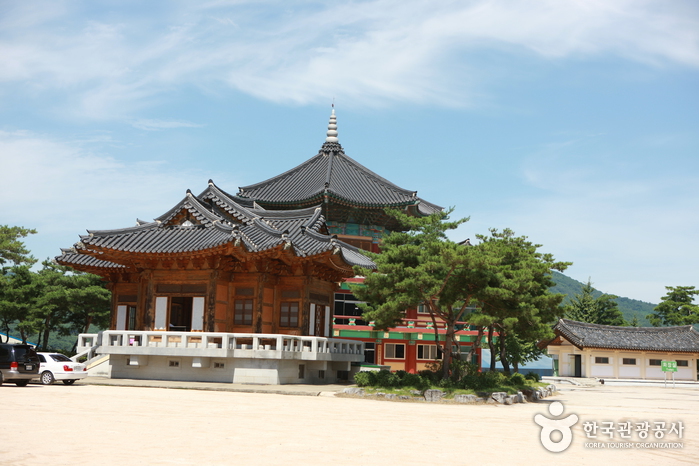

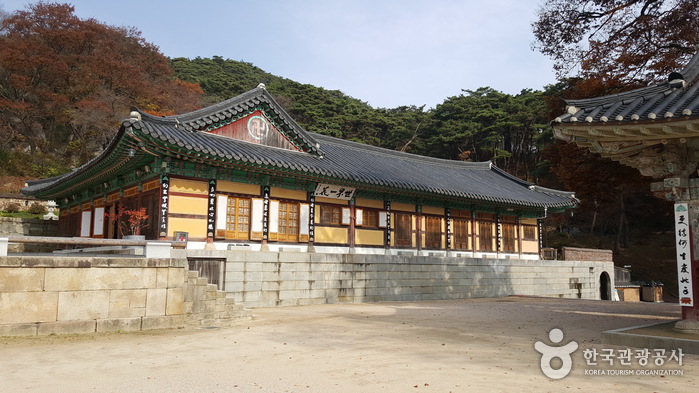
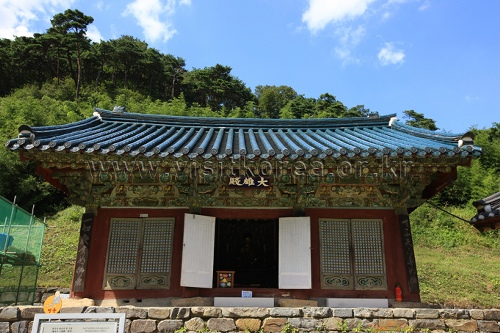
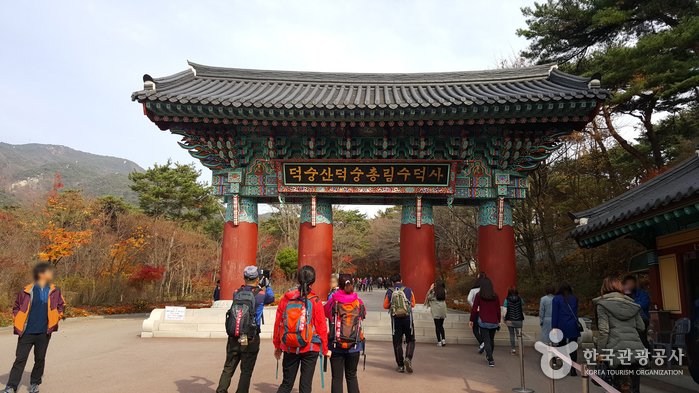
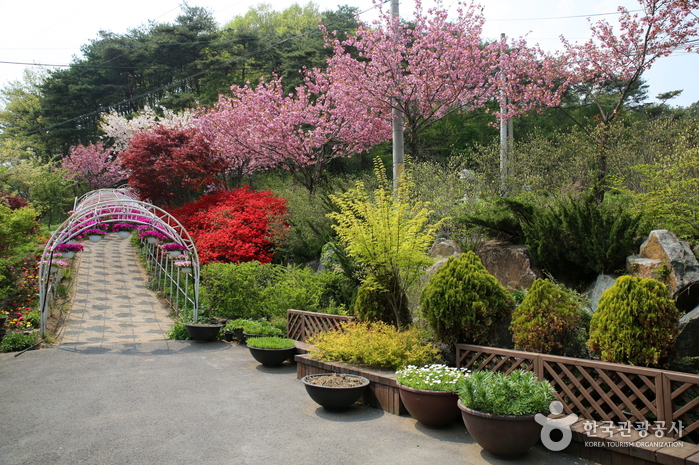
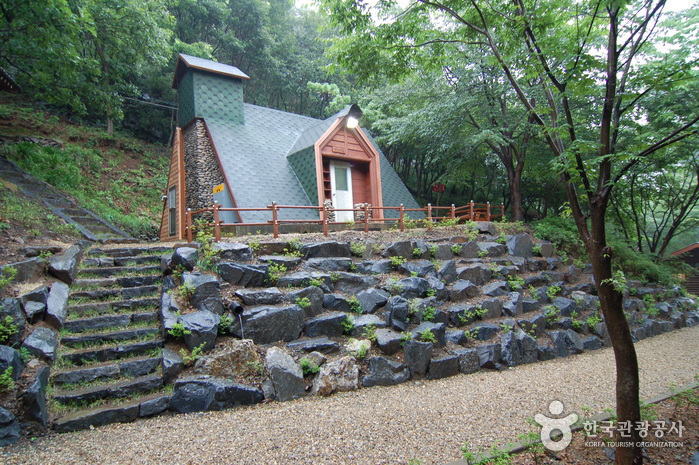
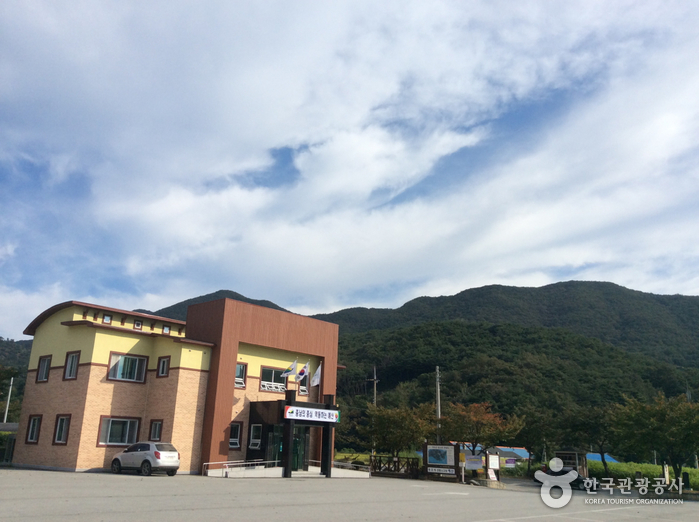
 English
English
 한국어
한국어 日本語
日本語 中文(简体)
中文(简体) Deutsch
Deutsch Français
Français Español
Español Русский
Русский